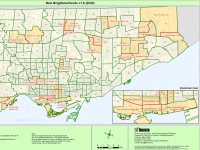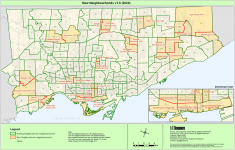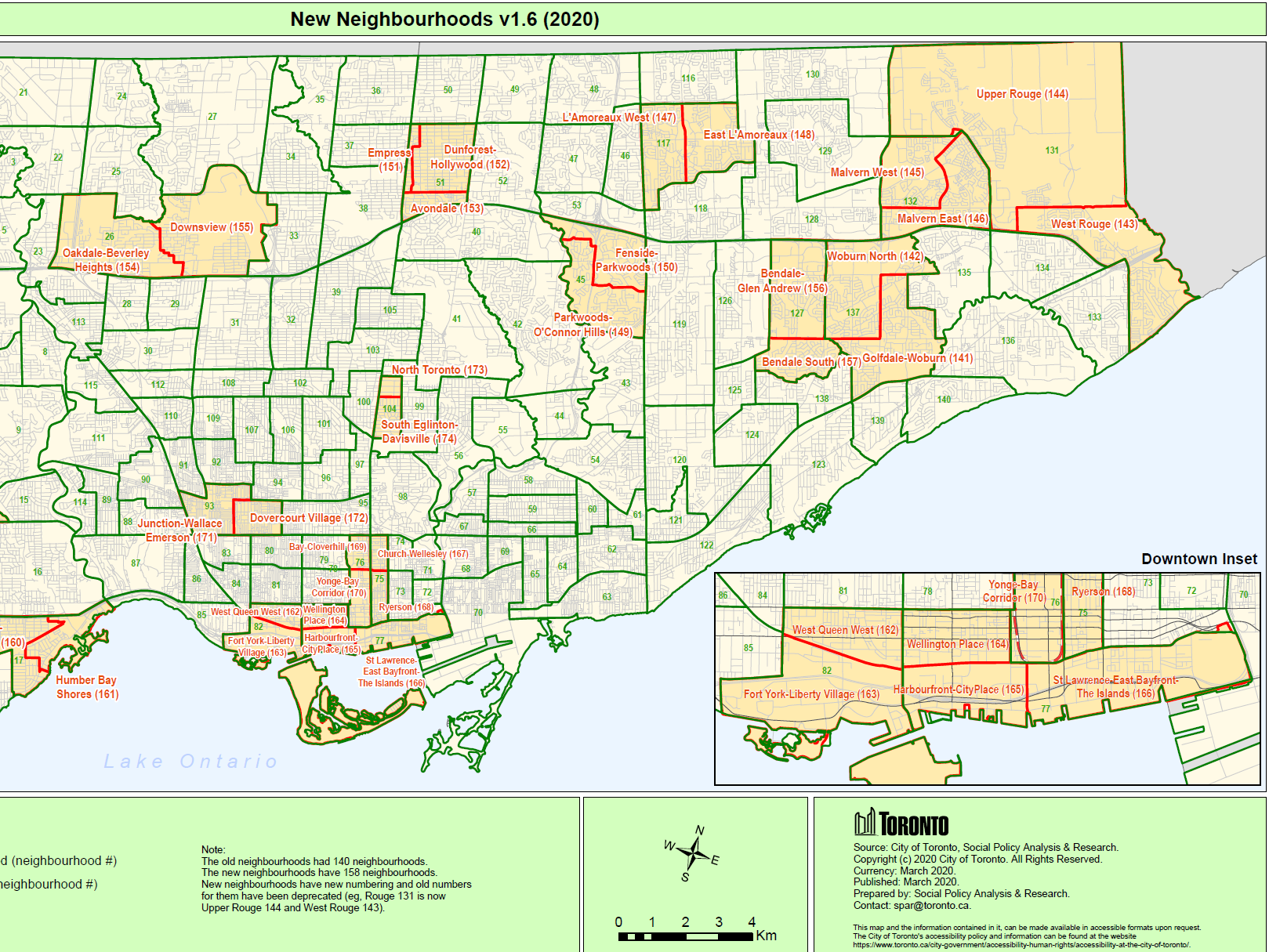Toronto updating its number of neighbourhoods to 158
Population growth has made each neighbourhood’s population "unbalanced," the city says
Author of the article:Jenny Yuen
Publishing date:Mar 16, 2021 • 1 hour ago • 1 minute read • comment bubble5 Comments
The city is redesigning its 140 neighbourhoods and forming a total of 158 new boundaries.
The city is redesigning its 140 neighbourhoods and forming a total of 158 new boundaries. PHOTO BY CITY OF TORONTO
Article content
Toronto’s neighbourhoods are getting a refresh, transforming from the existing number of 140 to 158.
The City of Toronto plans to replace 16 old neighbourhoods with 34 new ones, while the rest stay the same. Part of the new map includes retiring old neighbourhood numbers and starting new numbers at 141, so now there will be 158 neighbourhoods numbered from 1 to 174.
“Toronto’s existing 140 social planning neighbourhoods have been in existence since the late 1990s,” the city’s website reads.
“However, in recent years, population growth has made each neighbourhood’s population unbalanced in relation to the others. To balance population growth, the Social Research and Information Management unit, together with partners in other city divisions and public agencies, developed neighbourhood splits that resulted in 34 new neighbourhood areas with more balanced populations.”
For instance, for the over 65,000 people living in what’s currently known as “Waterfront Communities — The Island,” that massive block of land will now split into three different areas: Harbourfront-CityPlace, St. Lawrence-East Bayfront-The Islands, and Wellington Place.
Advertisement
STORY CONTINUES BELOW
This advertisement has not loaded yet, but your article continues below.
Article content
Meanwhile, the current “Niagara” neighbourhood will be broken down into West Queen West and Fort York-Liberty Village.
Further north, the current Willowdale East will break into three new neighbourhoods — Empress, Avondale, and Dunforest-Hollywood.
“Only internal lines are made for new neighbourhoods. This allows old neighbourhoods to be compared to new neighbourhoods,” according to the city. “Neighbourhood splits follow Statistics Canada’s census tract geography for maximum compatibility with existing datasets.”
The jump in population, according to most recent Census data in 2016, showed Toronto had increased by 116,511 in the five-year period since 2011. The next Census survey is scheduled for May.
Among the changes include two neighbourhood improvement areas being split — Woburn 137 will be Woburn North 142 and Golfdale-Woburn, and Downsview-Roding-CFB is now Downsview and Oakdale-Beverley Heights.
The new 158 neighbourhoods will be publicly announced in early 2021, the city said, but no definite date has been determined.
jyuen@postmedia.com


 census.gc.ca
census.gc.ca

 torontosun.com
torontosun.com
Population growth has made each neighbourhood’s population "unbalanced," the city says
Author of the article:Jenny Yuen
Publishing date:Mar 16, 2021 • 1 hour ago • 1 minute read • comment bubble5 Comments
The city is redesigning its 140 neighbourhoods and forming a total of 158 new boundaries.
The city is redesigning its 140 neighbourhoods and forming a total of 158 new boundaries. PHOTO BY CITY OF TORONTO
Article content
Toronto’s neighbourhoods are getting a refresh, transforming from the existing number of 140 to 158.
The City of Toronto plans to replace 16 old neighbourhoods with 34 new ones, while the rest stay the same. Part of the new map includes retiring old neighbourhood numbers and starting new numbers at 141, so now there will be 158 neighbourhoods numbered from 1 to 174.
“Toronto’s existing 140 social planning neighbourhoods have been in existence since the late 1990s,” the city’s website reads.
“However, in recent years, population growth has made each neighbourhood’s population unbalanced in relation to the others. To balance population growth, the Social Research and Information Management unit, together with partners in other city divisions and public agencies, developed neighbourhood splits that resulted in 34 new neighbourhood areas with more balanced populations.”
For instance, for the over 65,000 people living in what’s currently known as “Waterfront Communities — The Island,” that massive block of land will now split into three different areas: Harbourfront-CityPlace, St. Lawrence-East Bayfront-The Islands, and Wellington Place.
Advertisement
STORY CONTINUES BELOW
This advertisement has not loaded yet, but your article continues below.
Article content
Meanwhile, the current “Niagara” neighbourhood will be broken down into West Queen West and Fort York-Liberty Village.
Further north, the current Willowdale East will break into three new neighbourhoods — Empress, Avondale, and Dunforest-Hollywood.
“Only internal lines are made for new neighbourhoods. This allows old neighbourhoods to be compared to new neighbourhoods,” according to the city. “Neighbourhood splits follow Statistics Canada’s census tract geography for maximum compatibility with existing datasets.”
The jump in population, according to most recent Census data in 2016, showed Toronto had increased by 116,511 in the five-year period since 2011. The next Census survey is scheduled for May.
Among the changes include two neighbourhood improvement areas being split — Woburn 137 will be Woburn North 142 and Golfdale-Woburn, and Downsview-Roding-CFB is now Downsview and Oakdale-Beverley Heights.
The new 158 neighbourhoods will be publicly announced in early 2021, the city said, but no definite date has been determined.
jyuen@postmedia.com


File not found | Fichier non trouvé

Toronto updating its number of neighbourhoods to 158
The city claims population growth has made each neighbourhood’s population "unbalanced"